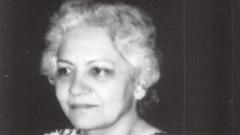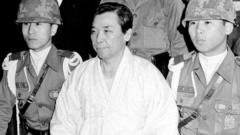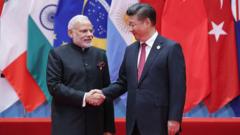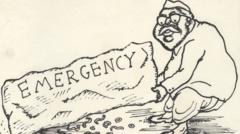Sneh Bhargava, a trailblazing figure in Indian medicine, recounts her harrowing encounter with Indira Gandhi following the prime minister's assassination, sharing insight into her remarkable career in radiology.
A Pioneering Radiologist Reflects on Indira Gandhi's Last Moments

A Pioneering Radiologist Reflects on Indira Gandhi's Last Moments
Dr. Sneh Bhargava, India's first female AIIMS director, opens up about her experience during Gandhi's assassination.
Dr. Sneh Bhargava, a renowned radiologist in India, offers a poignant recollection of the tragic final moments of former Prime Minister Indira Gandhi as detailed in her recently published memoir, "The Woman Who Ran AIIMS." At 90, Bhargava made history as the first female director of the All India Institute of Medical Sciences (AIIMS) in Delhi and remains an integral part of the medical community at 95. Her career has been characterized by resilience and pioneering contributions to the field of radiology.
Her tenure began on a fateful day, October 31, 1984, when she was called to the casualty ward of AIIMS. There, she encountered Gandhi, who lay critically injured following an assassination attempt by her own bodyguards. "I didn’t perceive her as the prime minister; I was solely focused on saving her life," Bhargava told the media. Despite the chaos outside the hospital and the news of riots emerging, her immediate priority was to ensure Gandhi's safety as she was moved to the operating theatre.
Bhargava writes of the surreal experience of maintaining the illusion that they were attempting to save the prime minister's life, even as they knew she had succumbed to her injuries upon arrival. "For the next four hours, we had to act as if hope remained," she detailed in her memoir. During this time, she witnessed the distressing scene of a Sikh doctor fleeing the room upon learning of the gravity of the situation.
The aftermath also saw Bhargava participating in the embalming process, where she faced the grim reality of Gandhi's assassination, noting how the embalming fluid leaked from her body due to extensive wounds. Beyond this tragic event, Bhargava’s memoir sheds light on her significant contributions to radiology and her interactions with notable political figures throughout her career.
She recounts intriguing stories, including an encounter with Jawaharlal Nehru and a close call with Sonia Gandhi when Rahul would visit AIIMS after an injury. Bhargava emphasizes her commitment to patient care despite political interference and her endeavors to elevate the field of radiology in India, having introduced advanced diagnostic equipment at AIIMS.
Born into an affluent family during a tumultuous period in undivided India, Bhargava pursued her medical education amidst societal constraints faced by women. She highlights her family's supportive role in breaking barriers, urging parents to nurture their daughters' ambitions to foster equality in opportunities.
"I hope mothers and fathers support their daughters just as they do their sons," she expressed, advocating for the empowerment of future generations of women. As Dr. Bhargava continues to inspire through her words and experiences, her story remains a testament to perseverance and change in Indian society.




















